|
Within the Movie ‘Merry Christmas Mr Lawrence’ a Japanese POW Camp Commandant decides that the prison population of European (military) inmates are ‘spiritually lazy’. When being beaten or made to stand for hours in the sun had not altered this situation, the Japanese Officer decided that the Camp population would undergo the Shinto ritual of ‘Misogi’ (禊) – in this instance – involving a 24-hour fast-period of no eating or drinking. This is despite the daily ration being intolerably low to start with. Most prisoners – even the stronger men – were on the brink of starvation. The Japanese Officer (Captain Yanoi) – by further depleting the starvation rations - would also adhere to this ritual of ‘fasting’ whilst traditionally dressed - and sat in meditation in the Camp ‘Dojo’. This is the pristine training hall used by the Japanese Officers for martial arts and spiritual practice (a mixture of Buddhist and Shinto spiritual traditions). Similarly, in the book ‘Empire of the Sun’ written by JG Ballard – the (civilian) POW Camp (Assistant) Commandant (Sergeant Nagata) occasionally orders Chinese vagrants (often women and girls) to be ‘beaten to death’ by Japanese soldiers wielding wooden clubs. The actual 'Commandant' - Hyashi - was in fact a 'civilian' and a careerist diplomat who tended to only interfere in Camp daily activities if absolutely necessary. Obviously, Hyashi never interfered in Nagata's brutality. These starving Chinese people sit patiently outside the POW Camp waiting to see if they will be allowed in to receive a portion of the already meagre rations. The women and girls are often raped by the Japanese guards before the Camp populace of British people are assembled to watch the unfolding ritual of ‘despatch’. Sergeant Nagata believes the British POWs are ‘spiritually lazy’ and seeks to stimulate their individual (and collective) ‘ki’ (氣) flow. This ‘life force’ not only flows through each individual body – but also through the entire Camp. As Sergeant Nagata believes the Chinese people to be an ‘inferior race’ – their brutal murder (achieved through a demonstration of ‘Japanese’ manly vigour) – will ‘release’ the ‘ki’ from their (broken) bodies and supplement that available throughout the Camp. The two primary Shinto rituals on display in both of the above examples are: 禊 (Misogi) – Purification (Cleansing) of the inside and outside of the mind and body. 祓 (Harae) – Purification (Exorcism) of corruption out of the interior of the mind and body. As this ‘Kanji’ is in fact comprised of ‘Chinese’ ideograms, I can read these characters and give some type of explanation as to what these rituals are supposed to represent – at least in a historical context. I say this as the rubric of Japanese ‘spiritual’ fascism distorted (for decades) rituals and practices that would normally not have been so severe or murderously brutal. Bear in mind that within ten-years of WWII being over – Western students of Judo, Kendo and Karate-Do were avidly volunteering to undergo these rituals – albeit in a non-war setting. Nevertheless, the rituals that the Imperial Japanese used to torture and murder millions of Western and Asian people – are today routinely considered part and parcel of a legitimate Japanese martial arts practice. On the face of it, this is an extraordinary rehabilitation. As Chinese ideograms, these ‘Kanji’ characters can be read as follows: a) 禊 (xi4) is comprised of an upper and lower particle: Upper Particle = 气 (qi4) – refers to ‘energy’, ‘breath’ and ‘vital force’ Lower Particle = 米 (mi3) – denotes husked ‘rice’ that needs to be ‘cooked’ (transformed) in water Therefore, 禊 (xi4) suggests that the process of cooking rice in a cauldron (by lighting a fire underneath and boiling the water) not only produces nutritious food (which sustains all physical life) but also generates ‘steam’ as a useful and yet crucial by-product. This steam - through the (hidden) ‘pressure’ created - ‘lifts’ the lid of the cauldron with an effortless ease. It is this ‘unseen’ influence of a physical process that drives this concept. b) 祓 (fu4) is comprised of of a left and a right particle: Left Particle = 礻(shi4) is a contraction of ‘示’ (which denotes an ‘altar’ and the ‘rituals’ associated with it) – and refers to structured acts of ‘instruction’, that require ‘attention’ and possess great ‘importance’. Lower Particle = 犮 (ba2) denotes a ‘dog’ (犬 – quan3) that is ‘running’ (丿- pie3). The implied meaning is to perform a dramatic task with the appropriate amount of effort and required energy. This suggests that a religious ritual must be correctly performed (as if in a temple or at an altar) in the physical world - that opens a connecting door-way to the spiritual world. Once this channel has been correctly opened – the influence of the spiritual world is then allowed to positively flow (unseen) into the material world – thus influencing temporal events. Correct (disciplined) and timely action in the physical world is the basis of this concept. Success is defined as achieving an exact ritualistic replication that does not deviation from the accepted norm – as ‘deviation’ of any sort is tantamount to ‘ill-discipline’. Conclusion Armed with this knowledge, it can be suggested that the Japanese concept of ‘禊’ (Misogi) refers to arduous physical activity that requires ‘sweating’. Through hard and continuous labour – a definite and positive metamorphosis is produced in the material world – that possesses definite (but ‘hidden’) implications for the inner world (almost as a side effect). By way of comparison, ‘祓’ (Harae) refers to a metaphysical ritual that although partly physical in its ritualistic content, remains nevertheless ‘metaphysical’ in nature and intent. This is because ‘祓’ (Harae) constitutes a ‘purifying’ spell achieved through words, actions, and a specific and certain state of mind.
0 Comments
Japanese Karate-Do (General) - 'Mawashi-Uke' (廻し受け): Mawa (廻) = rotation, turning, rounded and circular, shi (し) = four-corners, all-areas and comprensive-cover U (受) = receive, meet, accept and stoically bear (suffer) Ke (け) = stratagem, plan, calculation and measure Okinawan Goju Ryu Karate-Do - 'Toro Gushi-Uke' (虎口受け): Toro Gushi (虎口) = literally 'Tiger-Mouth' envelopes the enemy - and closes inward from all-sides at once U (受) = receive, meet, accept and stoically bear (suffer) Ke (け) = stratagem, plan, calculation and measure Southern China Gongfu Equivalent: Double Butterfly Open-Palm = 双蝶掌 (Shuang Die Zhang) Okinawan Goju-Ryu 'condenses' many of these Southern Gongfu Movements for efficiency. Long stances are shortened whilst reaching arm-movements are brought closer to the body (perhaps adapted for practitioners spending long periods on boats). Many Hakka Gongfu Styles originating in the North progressed through this adaptation process in South China. Our Family Style did not - but virtually all the Clan Styles around our village did. Tora - Tiger - can also be pronounced 'Koko'. In Fujian this can be 'Ho Kho'. Sometimes, despite the literal interpretation of 'Tiger Mouth' - it is used in Chinese and Japanese texts to mean 'Jaws of Death! The Chinese text states that Goju Ryu is a genuine transmission of 'Nan Quan' (Southern Fist). 攻防一体虎口廻受 Attack and defence are integrated - the open tiger's mouth simultaneously envelopes and traps.
Dear Tony Interesting. Thank you for your knowledgeable explanation of sparring - an adult 'tiger playing with a cub'. This inspired me to research 'Ran-Dori' in Japanese-language sources - which is written as '乱取り' - '乱捕り' and 'らん‐どり'. Both of the following Japanese-language Wiki-entries (I have checked the data is correct) should be read side by side to gain an all-round clarity - as the 'Randori' entry does not specifically mention Karate-Do - whilst the 'Kumite' page explains that in some Styles of Karate-Do - 'Kumite' is referred to as 'Randori'. Randori - Japanese-Wiki (Fed Through Auto translate) Kumite - Japanese-Wiki (Fed Through Auto translate) I suspect the inference is that in Okinawan Karate-Do the term 'Randori' is used - whilst in Mainland Japan - the term 'Kumite' is the preferred. Difficult to say, but as you know, 'nuance' and 'implication' is an important part of Japanese communication. What is NOT said is as important (sometimes more so) than what IS said. Perhaps this Yin-Yang observation is just as important for sparring - whatever its origination and purpose. As for the traditional Japanese and Chinese ideograms - this is what we have: 乱取りand 乱捕り 乱 (ran) = chaos, disorder 取 - 捕 (to) = take hold of, gather, control, arrest り(ri) = logic, reason, understanding Therefore, 'Ran-Tori' and 'Ran-Dori' are synonymous - with the concept expressed in its written form as '乱-取り' - ot 'Chaos (Random Movement) - Seize Control of'. What is 'chaotic' in the environment is wilfully taken control of - by imposing an outside order upon it. This suggests that the 'non-controlled' is 'controlled' by the structure of Kata-technique - which is brought to bear by an expert. There also seems to be the suggestion that that which 'moves' - is wilfully brought to 'stillness'. As for a Chinese-language counter-part, perhaps we have: 乱 - 亂 (luan4) = disorderly, unstable, unrest, confused and wild (Japanese = 'turbulent') 取 (qu3) = take hold, fetch, receive, obtain and select り- 理 (li4) = put into order, tidy up, manage, reason, logic and rule It would seem that the Japanese term of 'Ran-Dori' equates to the Chinese term of 'Luan-Quli' - or 'Disorder - (into) Order Rule'. Your reply inspired me to think about what the Japanese '乱' (Ran) - or Chinese equivalent '亂' (luan4) - actually means. What is the definition of the 'disorder' being referenced to when 'Ran-Dori' is being discussed? Therefore, '亂' (luan4) is comprised of a 'left' and 'right' particle: Left Particle = 𤔔 (luan4) means to 'govern' and 'control' - and is structured as follows: a) Upper Element = 𠬪 (biao4) represents two-hands working together. The upper '爫' (zhao3) is a contraction of '爪,' (symbolising the vertical 'warp' threads used in weaving) - representing a 'claw' or 'hand' grasping downwards (from above) - and the lower '又' (you4) which is a right-hand 'grasping to the left' (meaning 'to repeat' and 'to possess') - signifying the horizontal 'weft' thread used in weaving. b) Lower (Inner) Element = 幺 (yao1) - a contraction of '糸' (mi4) which refers to 'thin silk threads'. c) Lower (Outer) Element = 冂 (jiong1) this is a 'comb', 'beater' or 'heddle' - a device to 'order' the silken threads that require weaving. In normal usage, this ideogram denotes the structured boundary that clearly demarks the city limits. Right Particle =乚 (yi3) is a contraction of '隱' (yin3) - meaning to 'hide', 'conceal' or 'cover-up', etc, as in 'something is missing'. It can also refer to a required process that is 'profound', 'subtle' and 'delicate' - but which is currently 'lacking'. It may also mean 'secret' and 'inward' or 'inner', etc. I would say that 'obscuration' is what this ideogram refers to in its meaning. Conclusion The literal meaning of '亂' (luan4) [or 'Ran' in 'Ran-dori] - is that it refers to a lack of skilful organising ability (disorder and confusion). The thin silk threads are not placed correctly on the wooden frame (loom) - and therefore cannot be 'weaved' together in an orderly fashion. This entire process lacks the required profound knowledge and experience to achieve the objective - thus the hands (and body) cannot be used in the appropriate manner. Ran-Dori (乱捕り), as a complete process, suggests that it is the opposite of the above 'lack of skill' that is require in sparring. Not only is this skill required, but 'ri' (li) element (理 - li3) - suggests a 'regulation' and an 'administration' (premised upon logic and reason) - such as the profound skill required to 'cut' and 'polish' jade. I was discussing Randori with another language expert and they gave me more data which I have added to this paragraph: 'Upper Element = 𠬪 (biao4) represents two-hands working together. The upper '爫' (zhao3) is a contraction of '爪,' (symbolising the vertical 'warp' threads used in weaving) - representing a 'claw' or 'hand' grasping downwards (from above) - and the lower '又' (you4) which is a right-hand 'grasping to the left' (meaning 'to repeat' and 'to possess') - signifying the horizontal 'weft' thread used in weaving. ' I was curious as to why the two hands were so specific in their orientation and my colleague said that they are clearly carrying out the process required for ancient 'weaving'. One hand is laying the 'warp' - or 'vertical' thread down through the loom - whilst the other right hand is performing the function of 'weaving' multiple 'weft' threads into place horizontally across the loom! As a matter of comparison - the 'Kumi' (組) in Kumi-te (組手) - Chinese 'Zu Shou' - means to 'weave continuously'. This translates as 'to be skilful' (the silken threads are skilfully woven [糹-si1] together forever - like the longevity of a sacrificial vessel [且 - qie3] - which are traditionally made out of stone). Therefore, Kumi-te literally refers to a 'continuous skill that unfolds through the hand'. This may be compared to the term 'Ran-Dori' which refers to a 'missing skill' that has yet to be 'acquired' and is in the midst of 'being acquired' (through developmental training) - whilst Kumi-te implies that the required skill is already present and should manifest automatically.
This Japanese technique is written using two Chinese and one Japanese ideogram - with all three ideograms being routinely used in the Japanese written language - and two ideograms ('1' and '2') being used in the Chinese written language: 腰 - Japanese - Koshi (Chinese: yao1) = waist, hips and midsection 投 - Japanese - Na (Chinese: tou2) = throw, blend, redirect and reject げ - Japanese - Ge = down, low, depth and ground Interestingly, with regards the ideogram '腰' (Koshi) - both the Japanese and Chinese language dictionaries give an identical (and exact) physical location. Therefore, 'Koshi' represents the 'waist' (or the anatomical 'space' between the hips) situated toward the front of the body - whilst the back of the body corresponds 'Koshi' to the 'small of the back' or the 'lumbar' region. Although neither dictionary mentions the centre of gravity of the body - or the 'lower dantian' (both situated three-inches below the naval) it seems clear that such a 'special' area is implied. I think this assumption receives support as 'Koshi' is also used to refer to the 'kidney' area - perhaps slightly higher than the lumbar a 'cold' area significant within traditional Japanese and Chinese medicine. Although 腰 (yao1) is prevalent within Chinese martial arts (used to counter an opponent through penetrating their technique, blending with it and redirecting it) - 'Koshinage (腰投げ)' is a 'distinct' Japanese physical interpretation not found in China. When the Chinese government took Sō Dōshin (宗道臣) [1911-1980] to a Japanese Court in the early 1970s (an event covered in one of Donn F. Draeger's books on 'Modern Budo') - part of the evidence accepted by this Court that his style of 'Shorinji Kempo' ('Shaolin Gongfu') was NOT of Chinese origin - is that nearly all of its techniques include 'Koshinage' (the BBC chose to omit this Court verdict in its 1980 'Way of Warrior' series). Cooperation of this type is a Japanese cultural development - and is not found in China's traditional arts - even though the concept is present (and used in a different manner). However, I would note that the use of squat-kicks is found in Chinese arts and are used in exactly the same manner as this documentary suggests - although our Hakka style places a great deal on toughening the legs to take continuous impact (similar to Muay Thai fighters in Thailand) and keep effectively moving. The only Karate-Do style I have encountered that has squat-kicks is Goju Ryu.
Part of educating ourselves (and our children) - has involved the continuous stimulation of mind and body through visiting museums, examining the past and striving to understand humanity as a broad expression of culture and creativity. During 2018, myself, Gee, Mei-An and Kai-Lin visited Torquay Museum (in South Devon). Astonishingly, this place has a Medieval Japanese Battle Kite! Oddly, I believe this object has been subsequently 'returned to storage' not long after our visit - and despite enquiring - I could not find out any further data as to provenance. An Imperial Archer (the Medieval equivalent of Early Japanese 'Special Forces') would be 'affixed' to the centre of a large (bamboo) kite and extended (through the use of a rope anchored to the ground) around 200 feet into the air above the battlefield. Sniping with arrows would then ensue - whilst the position of the enemy would be relayed to the Command on the ground! The kite could be moved with the soldier kept up in the sky if the terrain, weather and enemy activity allowed. What these individual soldiers went through whilst having to stand on such a flimsy device - we can only speculate! Their bravery, however, must be beyond doubt!
I was forwarded this short video clip from a colleague involved in high-level Aikido practice - which in their Japanese School involves Katana (Long Sword) 'cutting' (carried out in a peaceful, meditative state). It was explained to me that their Sensei had explained that prior to WWII - many 'Official' Sword Smiths in Japan possessed a 'Permanent' Governmental Permission to 'Test' the effectiveness of freshly forged blades on the necks of judicial prisoners Sentenced to Death. As the process of 'Test Cutting' blades today (only using rolled-up tatami mats) is referred to as 'Tameshigiri (試し切り) - could I decipher, translate and transliterate this Japanese term to see if this 'history' is denoted in the concept. My research is as follows: 1) 試 (Tame) = Trial, Experiment and Exploration. 2)し(Shi) = Death, Execution and Judicial Decapitation - achieved through s single (efficient) Sword 'cut' or 'swing' - where the blade does NOT oscillate (wobble) left and right when in movement. 3) 切 (Gi) = Slice, Cut and Cleave apart. 4) り(Ri) = Perfected Form, Finished and Completed Movement. The data obtained when forensically translating this term - which requires rolling-back layers of 'politically correct' (interpretive) terminology accrued over several post-1945 decades - does indeed support the history lesson as transmitted by the 'Aikido' Sensei concerned. The tatami mats - which must be struck and cleaved with a 'graceful ease' - have 'replaced' the necks of condemned Japanese criminals (who are now 'Hanged' in private). This is in fact a 'Death-Cut' - or a sword strike designed to render an opponent DEAD in the quickest and most efficient manner!
Building upon my previous work, I am considering the theory that the various Karate-Do Styles originally possessed 'different' and ‘diverse’ terms for their techniques - as each evolved from its foundational gongfu Style. For instance, traditional Chinese gongfu does not possess the unity or conformity that defines modern (Okinawan) Karate-Do - an attribute which gives Karate-Do an inherent robustness and strength – achieved through the process of removing of diversity. On the other hand, even within Chinese gongfu Forms contained within the same Style - exactly the same movement often possesses a completely different name! This is often due to a) metaphysical interpretations (linked to TCM) and b) to material practicality. A lower block may be performed with an open hand or closed fist - use the edge, palm or back of the open hand - or the 'Hammer Fist' of closed hand. The contact surface might be the boney areas of the wrist, or the bones of the fore-arm - similar to the 'Iron Arm' training performed in deep Horse Stance with fore-arms and wrists robustly striking one another (this is a Hakka speciality, and we do this from childhood - generating tremendous power when an adult)! I remember performing this type of conditioning within the Goju Ryu Karate-Do Style - only in a higher (Sanchin) Stance. Experts tend to adjust their technique to become like 'water' - which envelops and controls any 'stone-like' techniques! The metaphysical reasons are far too in-depth to cover in a single article – but what follows is a basic summary. The 'jing' [精] (retained sexual energy) and 'qi' [氣] (breath, food, drink and moral thought) are circulated up the 'Governing Vessel' (督脈 - Du Mai) and down the 'Conception Vessel' (任脉 - Ren Mai) in a continuous microcosmic cycle (小周天 - Xiao Zhou Tian). What the Japanese people renamed the 'Hara' (はら) - or '払 (fan3) in the Chinese language (this ideogram has no immediate metaphysical meaning within the modern Chinese language) - is I believe a reworking of the well-known lower ‘丹田’ (Dan Tian) situated 1.5-3 inches below the navel. The three 'Dan Tian' locations (分 - Fen) are found in TCM as follows: 1) Upper Dan Tian (上丹田 - Shang Dan Tian) - situated in the centre of the forehead (the so-called 'Third-Eye' or 'Yin Tang' [印堂] point [穴 - Xue]) situated on the ‘Governing Vessel’. This is where '神' (Shen) - or 'empty' and 'all-embracing' consciousness is first formed prior to 'expanding' through the body (uniting the three 'Dan Tian') and penetrating the physical environment. 2) Middle Dan Tian (中丹田 - Zhong Dan Tian) - situated around the Solar Plexus (the 'Tan Zhong' [膻中] point) on the ‘Conception Vessel’. 3) Lower Dan Tian (下丹田 - Xia Dan Tian) - situated 15 - 3 inches below the navel - depending upon medical source (the 'Guan Yuan' [关元] point) on the ‘Conception Vessel’. These three pressure-points all exist upon a unified line of inner energy flow that demarks the ‘Governing Vessel’ and the 'Conception Vessel' situated on the front of body – extending deep into the tissue of the body reaching to the back of the spinal bone. This three-dimensional TCM can be observed at work with the 'Upper Dan Tian' (Governing Vessel) - which is comprised of a three-way link between the exact inner-centre of the brain-mass (泥丸宫 - Ni Wan Gong) and the exact centre-point situated at the top of the skull-bone - the so-called 'Bai Hui (百会) point. All genuine (traditional) Chinese gongfu is comprised of TCM thinking, methodology and spirituality. Killing, maiming (hurting the opponent's mind and body - either temporarily or permanently) or stopping the opponent without hurting their mind or body - are the physical objectives. As for the spiritual side (which I think is also embedded in the 'Gedan Bara-I' - 'Gedan Hara-I') - this is a complex issue. Gee reminded me that one form of the lower block we practice in our Hakka Family Style is performed on each side of the body - and does not cross the front of the torso at all (and therefore does not traverse the Lower Dan Tian point – or ‘Hara’ in the Japanese language). The 'Governing Vessel' and ‘Conception Vessel’ ‘connect’ between the roof of the mouth (just behind the front upper-teeth) and is connected to the 'Conception Vessel' via the top of the tongue. Whereas the Upper Dan Tian appears within, upon and around the ‘Governing Vessel’ - the Middle and Lower Dan Tian appear within, upon and around the 'Conception Vessel'. However, the following analysis is a correct correlation of Karate-Do ‘Blocks’ and ‘Dan Tian’ pressure-points: Jo-Dan (Upper Level) Uke (Block) = Upper Dan Tian Chu-Dan (Middle Level) Uke (Block) = Middle Dan Tian Ge-Dan (Lower Level) Hara-I (Block) = Lower Dan Tian This suggests that the Upper Block (when performed to the immediate front of the body) travels through the Upper Dan Tian. The Middle Block (when performed to the immediate front of the body) travels through the Middle Dan Tian, and the Lower Block (when performed to the immediate front of the body) travels through the Lower Dan Tian. I have accessed a Japanese language page regarding the 'Dan Tian' and this confirms the link between the Lower Dan Tian and the 'Hara'. The Chinese name for the Lower Dan Tian is '关元' (Guan Yuan) which is rendered into the Japanese language as '関元' (Seki Gen). This is also referred to as 'はら' (Hara) supposedly due to the influence of Zen Buddhist practice - but as a Chinese Ch'an Buddhist myself, I have no idea why this should historically be the case. However, by building upon my earlier work regarding ‘Ge-Dan Bara-I’ (下段払い)’ - if we follow this line of reasoning, the original (or 'early') Karate-Do Blocks could have been called something like this: Jo-Dan Gindo-I (上段 銀堂 い) = Upper Level 'Gindo' (Upper Dan Tian) Forceful Execute! Chu-Dan Nichu-I (中段 丹中 い) = Middle Level 'Nichu' (Middle Dan Tian) Forceful Execute! Ge-Dan Bara-I’ (下段払い) which should read ‘Ge-Dan Hara-I’ = Lower Block 'Hara' (Lower Dan Tian) Forceful Execute! To arrive at the above speculation - I have 'reversed engineered' the structure of the Lower Block (conventionally and incorrectly rendered into English as ‘Ge-Dan Bara-I’ - [下段払い] - when it should read ‘Ge-Dan Hara-I') into the Middle and Upper versions. I have used Japanese language transliterations of the original TCM designations regarding the Dan Tian points even though I do not know the 'slang' terms for these Japanese words. I say this as I am told that 'Hara' is a slang term for the Chinese TCM language term '关元' (Guan Yuan) [which refers to the Lower Dan Tian point] - which translates as to 'Seal the Source' or 'Stop the Leakage to Strengthen the Foundation'. Traditionally, the Japanese people developed the ritual of 'cutting-open' (Hara-Kiri) this anatomical area as a means of 'releasing' what they thought to be their 'life spirit'. I know of no Chinese cultural equivalent to this practice. The 'Blocking' techniques of Karate-Do, however, serve the exact 'opposite' of this destructive practice – and this is achieved by the Karate-Do Blocks 'protecting' these three energy centres - which are considered vital for the evolution of life!
The 'Ricardo Leite' video is much longer than the average 'snippet' types - and for good reason - as it is designed for an 'extended' (detailed) study (at least on my part). It has took me two or three sessions to view the content completely (over two-days) - but even then - the depth of comprehension has only been at the surface level. On initial inspection there is much subtlety that needs to be carefully 'unpacked' - as they say today! This Goju Ryu Kata 'Bunkai' (分解) looks similar in manifestation to Taijiquan (position, timing and using the opponent's momentum against them). a) 分 (fen1) - Japanese Kanji also written 'ぶん' (bun) = moment (in time - literally 'a minute'), part and 'to divide' and 'distinguish' b) 解 (jie3) - Japanese Kanji also written 'かい' (kai) = untie, solve and clarify By continuous observation, the 'bunkai' process allows for a clarification of over-all understanding - developed by carefully examining the constituent parts. Of course, this is as much a practical matter as it is a theoretical analysis - all dependent upon a (repeated) structured experience. With regards to the first ideogram of 'Bunkai' (分解):
a) 分 (fen1) - Japanese Kanji also written 'ぶん' (bun) = moment (in time - literally 'a minute'), part and 'to divide' and 'distinguish' Within the Chinese language - the ideogram 分 (fen1) [bun] is used to denote a single 'minute' (comprised of '60 seconds') - as in 'one minute' of the sixty minutes that comprise one hour! This suggests that there is an element of 'time' contained with the concept of 'Bunkai' (分解) - as if when assessing and applying a movement (or 'set' of movements) - there is an element of 'controlling' or 'altering' the perception of 'time'. This might mean that 'Bunkai' is NOT just the correct interpretation of the physical mechanics of Kata - but is also the metaphysical ability of expertly 'manipulating' how an opponent 'perceives' time. If the passing of time can be successfully 'altered' - then the opponent cannot 'occupy' the space they inhabit properly. When a Master controls the time and space (both within the mind and body and outside the mind and body) - then such an individual becomes 'invincible' in the sense that the direct path to defeating him or her is no longer available to ANY would be opponent! It is said that around 1926, the ethnic Chinese man named ‘Go Genki’ (呉賢貴) or ‘Wu Xiangui (1886-1940) – migrated to Okinawa and became a Japanese citizen. My view is that the name ‘呉賢貴’ (Wu Xian Gui) is a transliteration of this person’s chosen Japanese name – and is not his given ethnic ‘Chinese’ birth name. I believe this is true despite many Western scholars treating this transliteration as if it were his ‘true’ and ‘genuine’ ethnic Chinese name. Furthermore, Japanese language historical texts state that this Master of Fujian ‘White Crane Fist’ (白鶴拳 - Bai He Quan) married an Okinawan woman surnamed ‘Yoshihara’ (吉原 - Ji Yuan) - and that he took this surname as his own. This surname is common in Japan and the Ryukyu Islands and has more than one origination. This name literally translates as ‘Lucky Origination’ - and although one branch is linked to the Japanese imperial house – many others are simply linked to ‘good’ and ‘pleasant’ places. If Go Genki took this name, then he would have been known as ‘Yoshihara Genki’ or ‘吉原 賢貴’ - if these names (and facts) are correct. Go Genki is believed to have taught Miyagi Chojun the ‘Open Hand of the Crane’ exercise. This is recorded within Japanese language texts as '鶴の手'. The first and third ideograms - '鶴’ (he4) meaning ‘Crane’ and ‘手’ (shou3) meaning ‘Open-Hand’ - are of Chinese language origination, whilst the second character (‘の’ - ‘no’) is entirely ‘Japanese’ in nature. This phrase can be read in the Japanese language as: a) 鶴 (he4) - Crane = ‘か’ (Kaku), ‘つる’ (Tsuru) and ‘ず’ (Zu), etc. b) の (no) - Hiragana Character – ‘Belonging to’, 'Possessing’ and ‘Pertaining to’, etc. c) 手 (shou3) - Open-Hand = ‘ず’ (Zu), ‘て’ (Te) and ‘手’ (Te), etc. As this training method has been transmitted into the practice of modern Goju Ryu Karate-Do - the above concept can be compared to its contemporary counter-part – namely that of ‘Sticky-Hands’ generally referred to as ‘Kakie’ (カキエ). This analysis reveals a startling correlation in that ‘Kaku’ (か) - Japanese for ‘Crane’ - shares the first particle of ‘Kakie’, namely the Katakana particle of ‘カ’! This is said to be linked to the Chinese language ideogram ‘加’ (jia1). This ideogram is composed of two particles: Left Particle = ‘力’ (li4) - meaning a ‘plough’ used to cultivate the land. The foot presses down so that the plough may ‘cut’ into the soil whilst being firmly rooted. Right Particle = ‘口’ (kou3) - referring to an ‘open mouth’ which is calling-out encouragement to the oxen pulling the plough! During the Heian Period of Japan (794-1185 CE), however, the Chinese ideogram ‘加’ (jia1) was modified and reduced to only the left-hand particle – forming the Japanese Katakana letter of ‘カ’ (and the Hiragana letter of ‘か’). Interestingly, the Japanese term ‘Kaku’ (meaning ‘Crane’) is written as ‘か’ (mirroring the ‘Hiragana’ letter) - but in this instance it is a direct conjunction of the Chinese ideogram - 鶴 (he4), taking on a more specific and direct meaning. The Chinese ideogram - 鶴 (he4) or ‘Crane’ - is comprised of the following constituting particles: 1) Left-Hand Particle: 寉 (he4) - Archaic – Meaning ‘Crane’ and ‘Bird’. The Japanese equivalents for reading this Chinese particle include ‘か’ (Kaku) and ‘つる’ (Tsuru) - all referring to a ‘Crane’. 2) Right-Hand Particle: 鳥 (niao3) - ‘Bird’ and ‘To Breed’ Birds. The Japanese equivalents for reading this Chinese particle include ‘か’ (Ka) and ‘とり’ (Tori) - all referring to a ‘Bird’ and/or ‘Chicken’. The Japanese term ‘か’ (Kaku) - although a recognised conjunction of the Chinese ideogram 鶴 (he4) (meaning ‘Crane’) - is used today to refer to a ‘Mosquito’ (although an archaic interpretation also refers to a ‘deer’). Perhaps the association between a ‘Crane’ and a ‘Mosquito’ refers to both being flying creatures that are known to be ‘dangerous’ due to their ‘biting-stinging’ capabilities. What links the Japanese term ‘か’ (Kaku) - or ‘Crane’ - to the Goju Ryu Karate-Do practice of ‘カキエ’ (Kakie) - or ‘Sticky-Hands’ - is the Japanese (Katakana) language particle of ‘カ’. This corresponds to the ‘Hiragana’ particle of ‘か’ (also pronounced ‘Ka’ when discussed as the sixth syllable of the gojuon order). In and of itself, ‘カ’ (Ka) indicates a ‘question’ or a ‘sense of doubt’ when used with general Japanese language discourse – although it is also used as part of hundreds of other concepts, from Buddhist enlightenment to a glowing fire and many others! Whatever the case, when ‘か’ (Kaku) is used within the context of Goju Ryu Karate-Do - the particle ‘カ’ (Ka) forms an important constituting element of the Japanese word for ‘Crane’. In this instance, the fighting abilities of the Crane are emphasised. The Crane is defined as a large, long-legged bird of the Gruidae family – which can be dangerous because of its fierce squawking and deceptive movements – coupled with the use of its long and sharp beak, its strong kicking and its dangerous ability to powerfully deflect blows through the use of its wings. The alternative Japanese term for ‘Crane’ - ‘つる’ (Tsuru) - does not refer to the Crane’s fighting ability – but rather the length of its slender legs, body and beak. This is because ‘つる’ (Tsuru) is linked to a description of a ‘vine’, ‘string’ or ‘twine’, etc, - referring instead to the slim dimensions of the ‘Crane’ rather than any combative or fighting abilities it may possess. (Indeed, ‘つる’ (Tsuru), due to its association with ‘fishing’ and ‘hooks’, etc., also carries the meaning of ‘to hang’ - as if ‘hanging’ from a hook – perhaps referring to a ‘Crane’ as it soars through the sky – or perhaps as it stands upon one-leg – giving the impression that its solid stance has some other supporting device). As the practice of ‘カキエ’ (Kakie) is said be ‘Crane-like’ - then it is logical to assume that the practice of '鶴の手' (Kaku No Te) - or ‘Open-Hand of the Crane’ - must be directly related to the practice of ‘カキエ’ (Kakie). I suspect that as the Master to Disciple transmission was traditionally premised upon physical action and spoken instruction, the Chinese practice of ‘鶴の手’ (which could be pronounced in China as ‘He De Shou’ or more succinctly as ‘He Shou’) was passed on in Okinawa as ‘Kaku No Te’ - which was then transformed into ‘Kakie’ (カキエ) overtime – being finally written down through the manner in which the description of the practice had evolved. The original emphasis upon the ‘Crane’ as a noun – was transformed into an emphasis of the dynamics of the practice itself (as a ‘verb’). I believe the clue to this association is the inclusion of the Japanese particle ‘カ’ (Ka) in both ‘か’ (Kaku) - or ‘Crane’ - and in ‘カキエ’ (Kakie) - ‘Sticky-Hands'.
|
AuthorShifu Adrian Chan-Wyles (b. 1967) - Lineage (Generational) Inheritor of the Ch'an Dao Hakka Gongfu System. |
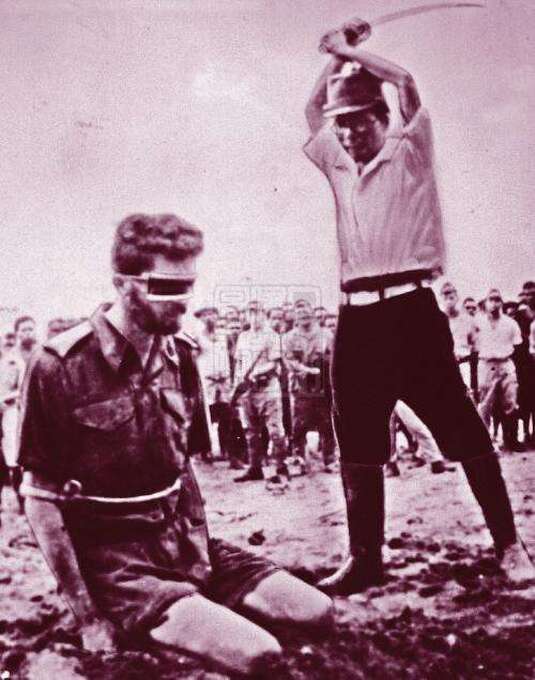
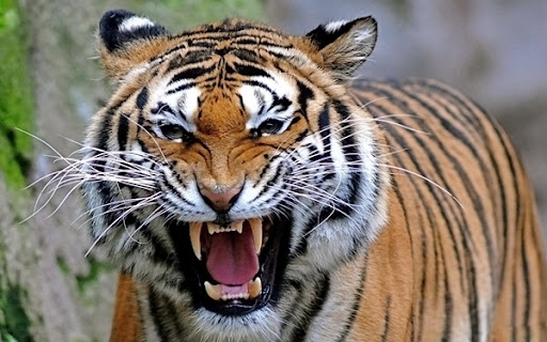
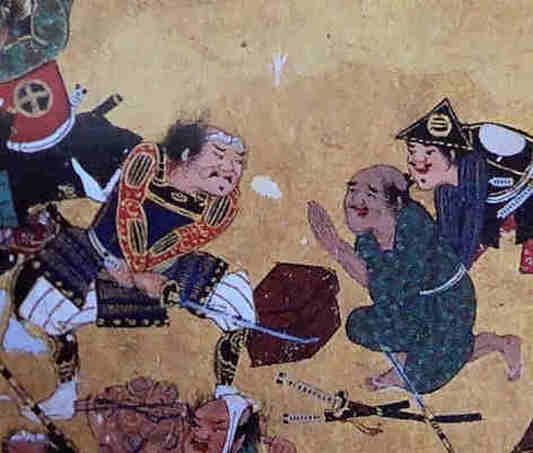
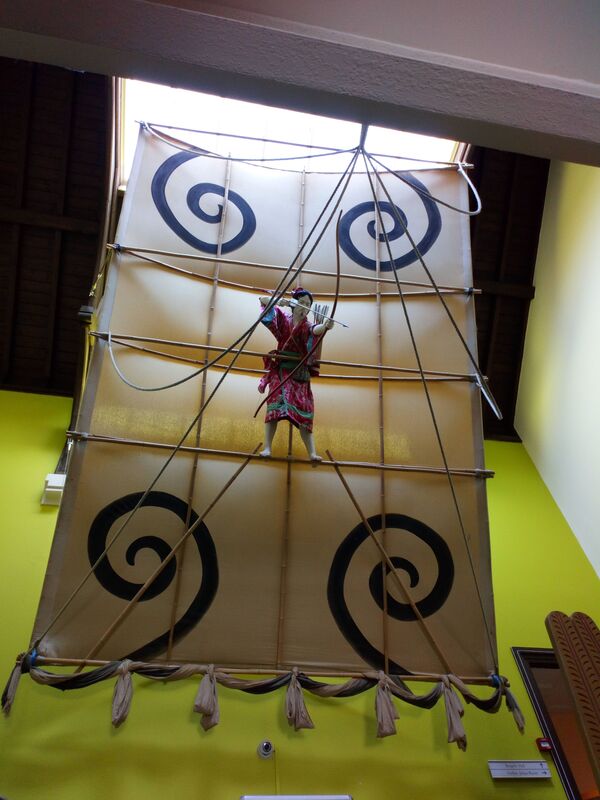
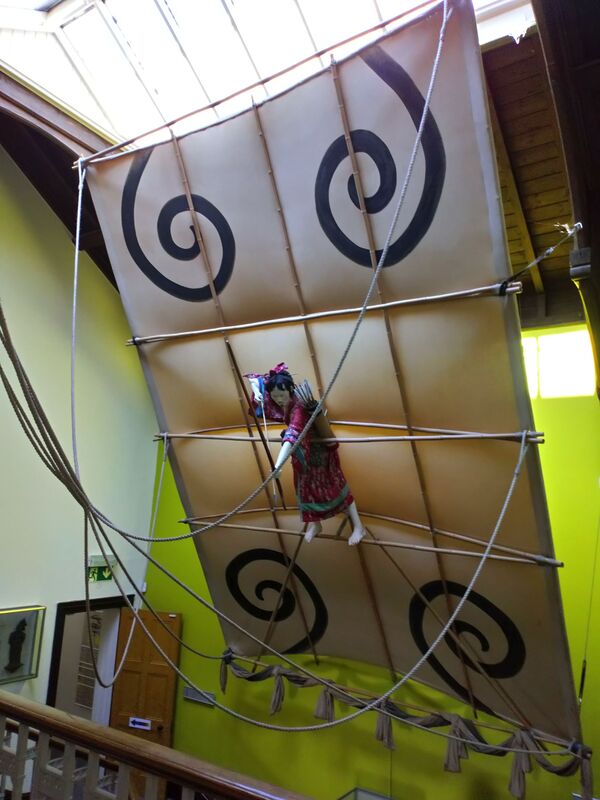
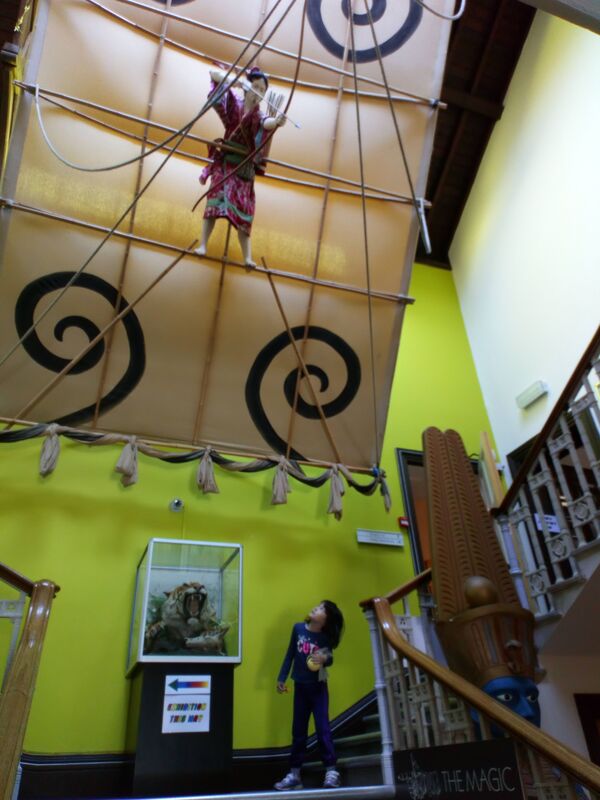
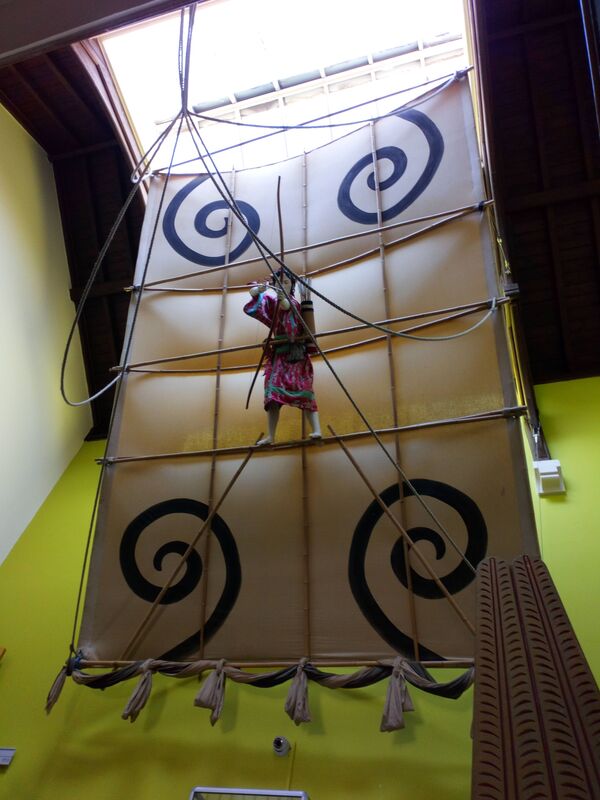
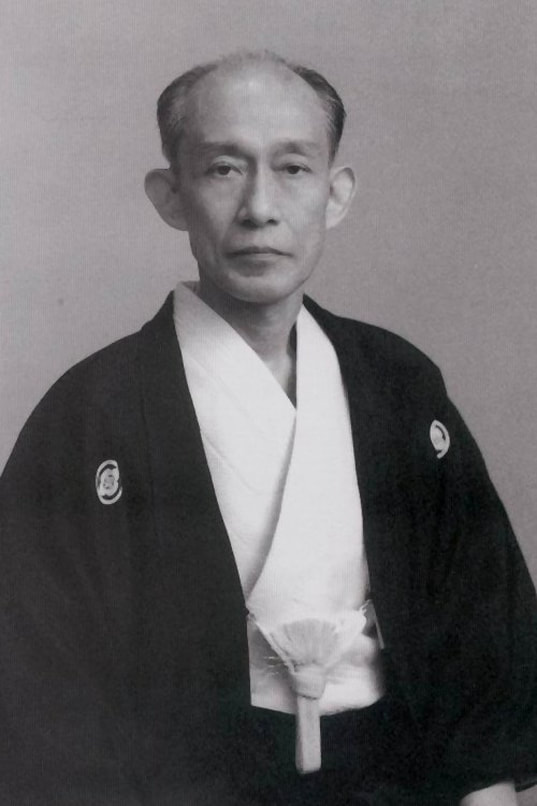
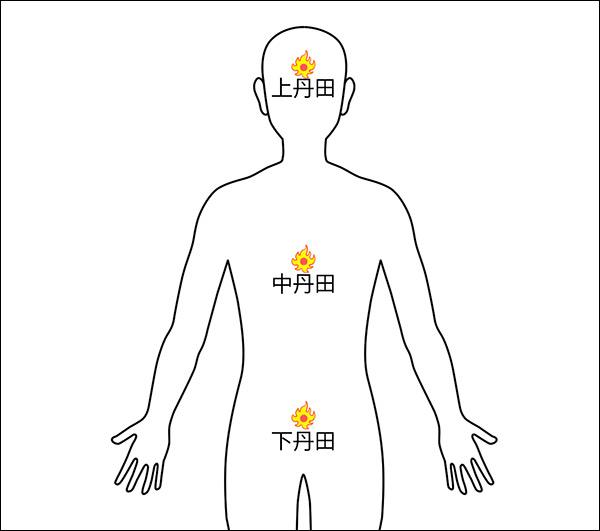
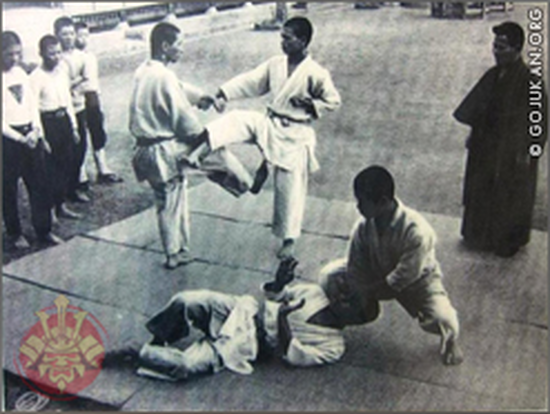
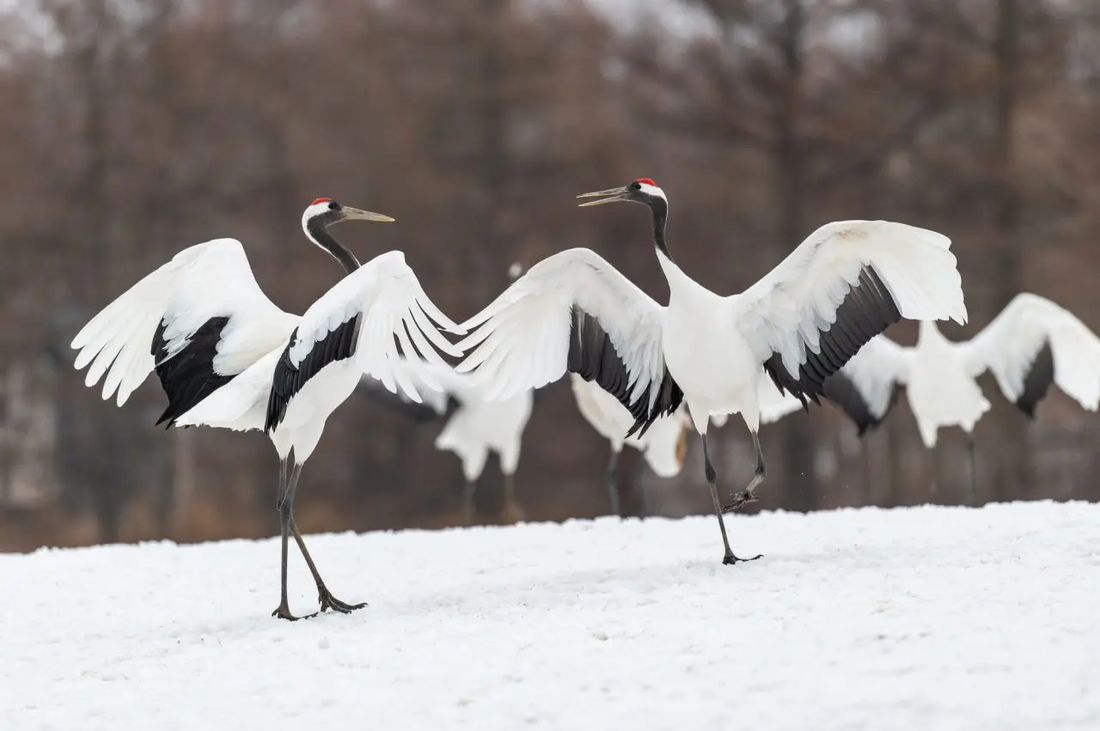
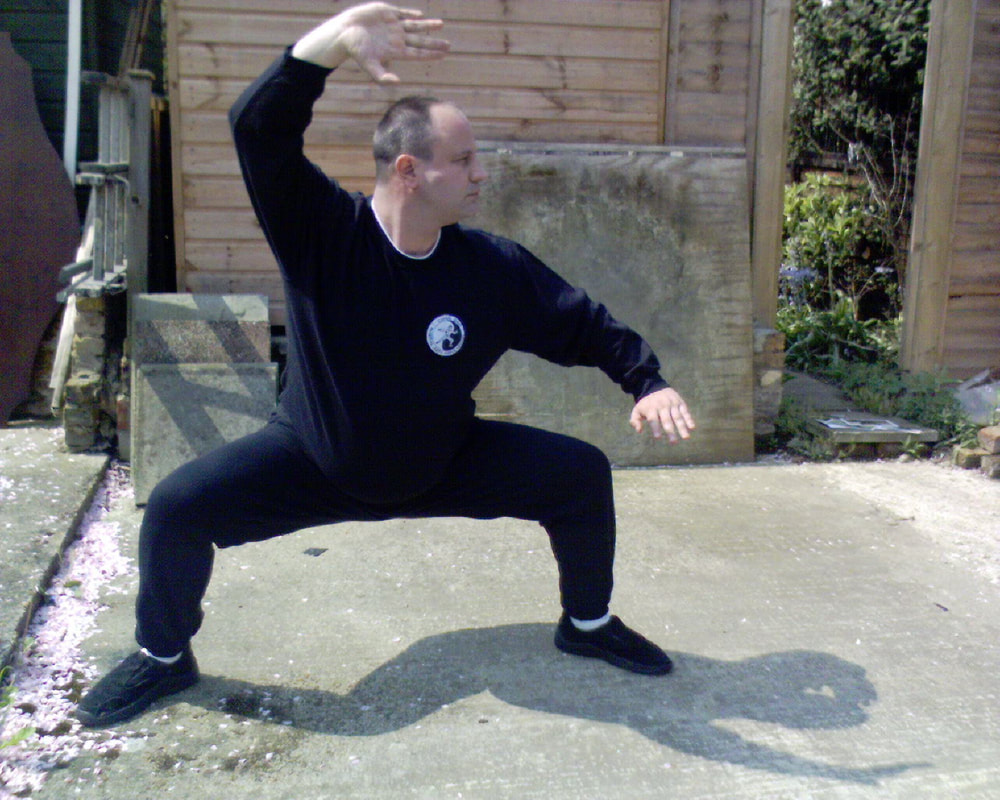
 RSS Feed
RSS Feed